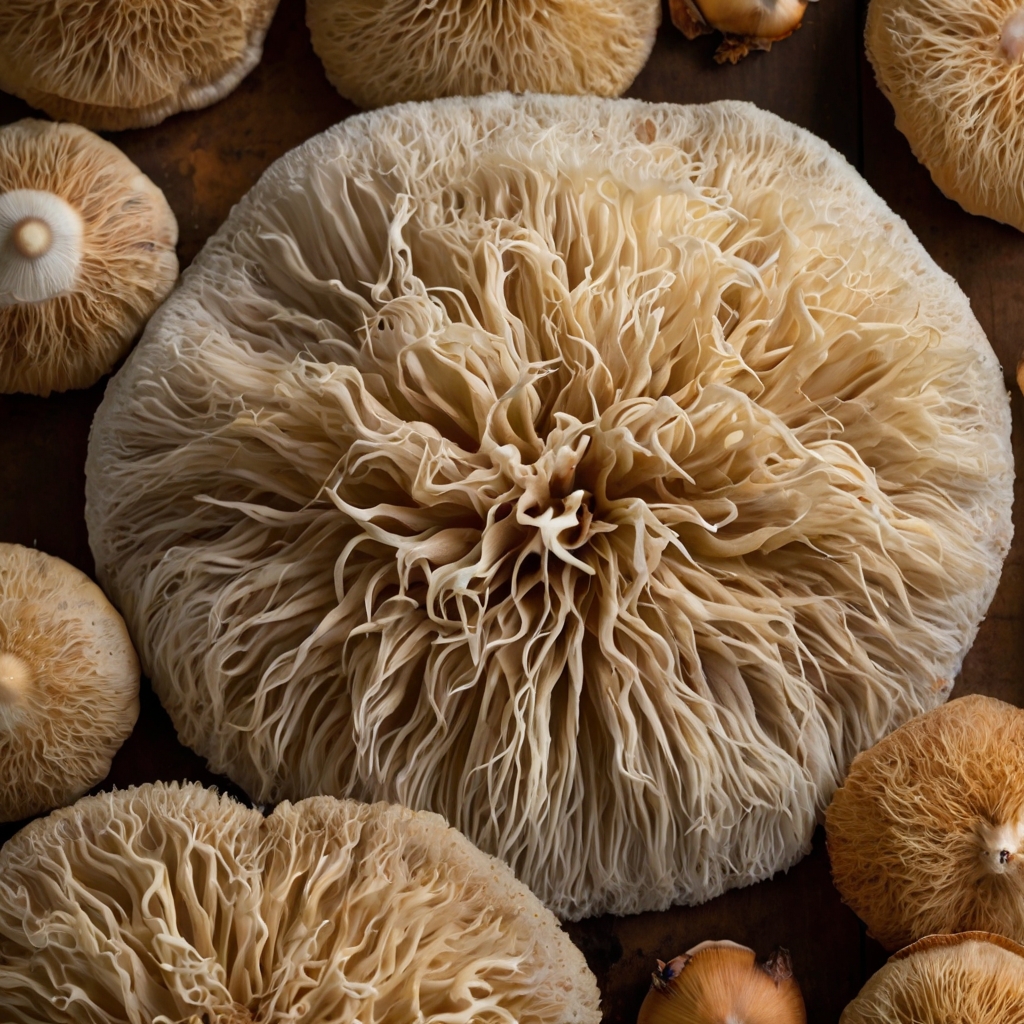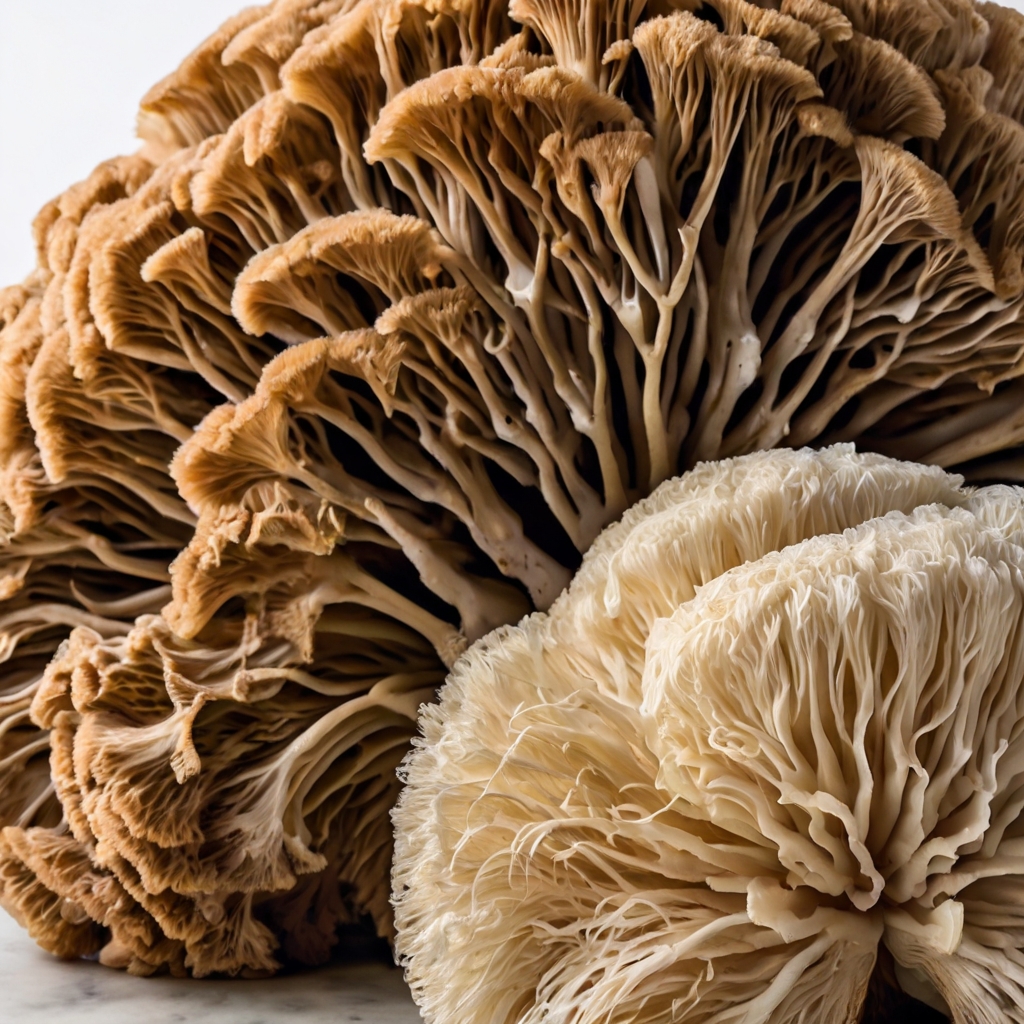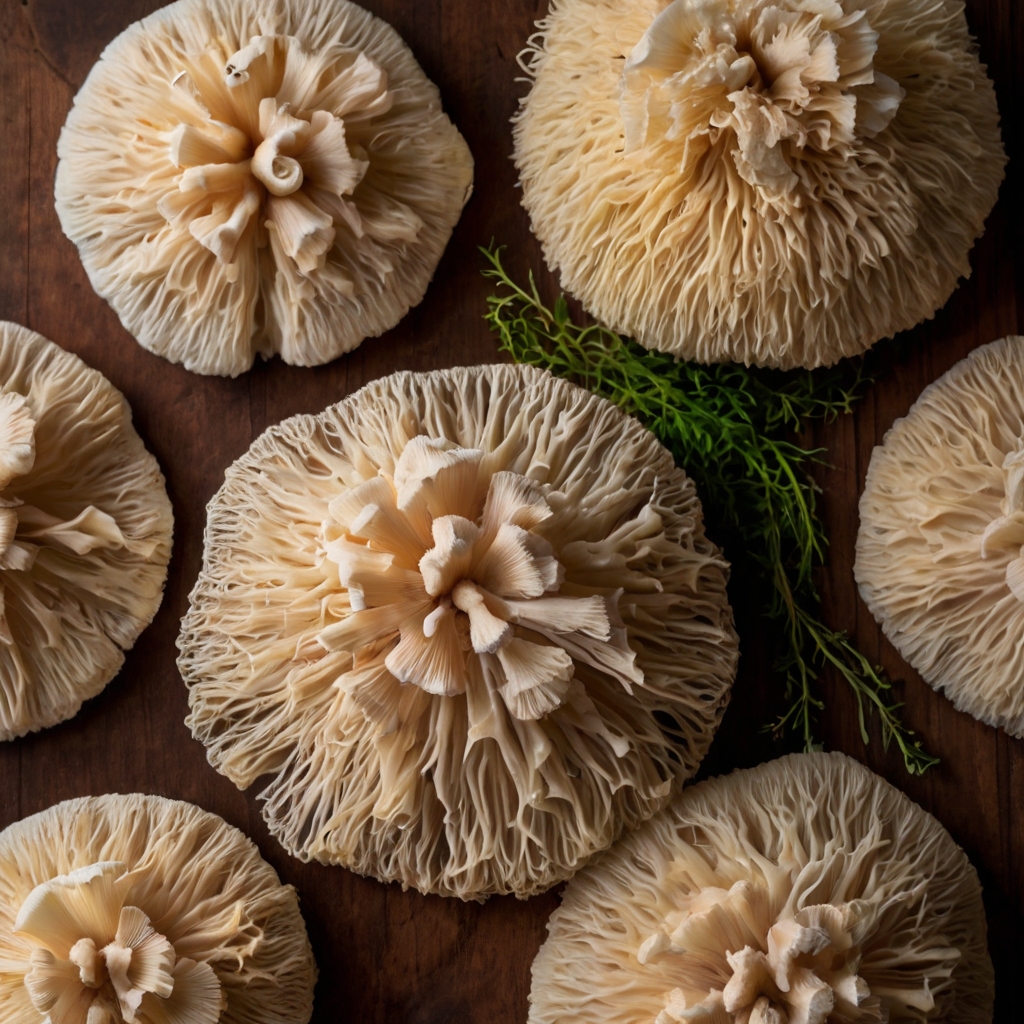How to cook Lion’s Mane Mushroom. Secrets from the chef

Let me introduce myself – I’m Marcus, a chef with over 20 years of experience working with unique ingredients. When I first encountered Lion’s Mane mushroom in a farmers market five years ago, it completely changed my approach to vegetarian cuisine. Today, I want to share everything I’ve learned about working with this remarkable fungus.
What is Lion’s Mane Mushroom?
Taste and Texture of Lion’s Mane

In my kitchen, I describe Lion’s Mane as “nature’s seafood substitute.” When properly prepared, it offers:
- A delicate sweetness reminiscent of crab or lobster
- Umami depth that rivals aged Parmesan
- A texture that transforms beautifully with different cooking methods
Pro tip: The younger specimens tend to be more tender, while larger ones develop deeper flavor – I use them differently in my dishes.
Health Benefits of Lion’s Mane
Beyond its culinary value, I appreciate Lion’s Mane for what it brings to my guests’ wellbeing:
| Benefit | Why It Matters | My Experience |
| Cognitive support | May enhance focus and memory | I serve it as a “brain food” special during exam seasons |
| Nerve regeneration | Potential nerve health benefits | Several regulars report reduced tingling in extremities |
| Digestive health | Contains prebiotic fibers | My vegan customers particularly appreciate this aspect |
I always tell my staff: “We’re not just cooking food – we’re cooking medicine.” But remember, while promising, these benefits need more scientific validation.
How to Prepare Lion’s Mane Mushroom
How to Clean Lion’s Mane Mushroom
Through trial and error, I’ve developed my foolproof cleaning method:
- Dry brush technique: I keep a dedicated soft-bristle brush just for mushrooms. Gently sweep from top to bottom following the “spines.”
- Spot cleaning: For stubborn dirt, I use a barely damp paper towel – no soaking!
- Base treatment: About 30% of specimens need base trimming. If it doesn’t yield slightly to pressure from my knife, it gets trimmed.
Common mistake I see: People rinse mushrooms like produce. With Lion’s Mane, this is a texture disaster waiting to happen.
Cutting Techniques for Cooking Lion’s Mane Mushroom
Here’s how I prepare it for different applications:
Slicing for Mushroom “Steaks”
- ½-inch thick slices
- Cut perpendicular to the growth direction
- Leave the “mane” intact on one side for visual appeal
Shredding for Crab-Like Texture
- Use fingers to pull apart along natural lines
- Creates perfect “crab meat” texture
- Works wonders in my vegan crab cakes
Dicing for Stir-Fries and Soups
- ¼-inch dice for even cooking
- Reserve any trimmings for mushroom stock
Pro tip: The way you cut affects final texture more than cooking time. I learned this the hard way during a disastrous dinner service early in my career.
Methods of cooking for Lion’s Mane Mushroom
Sautéing Lion’s Mane Mushroom
In my restaurant, sautéed Lion’s Mane is our #1 seller. Here’s how I do it:
- Heat the pan right – I use a mix of olive oil and butter (for richness) on medium-high heat. Too low, and you’ll steam it; too high, and it burns.
- Don’t overcrowd – I learned this lesson early: if the pan’s too full, the mushrooms release water and turn soggy. Single layer only.
- Golden-brown perfection – 3-4 minutes per side until crisp-edged but still tender inside.
- Finish with flair – A pinch of flaky sea salt, cracked black pepper, and a splash of sherry vinegar (my secret touch).
Pro tip: If you want extra depth, add a crushed garlic clove and thyme sprigs to the oil before adding the mushrooms.
Grilling and Pan-Searing Lion’s Mane Mushroom
I serve this as a vegan “filet mignon” at my pop-up dinners. Here’s my go-to method:
- Marinate for depth – I whisk together:
- 2 tbsp soy sauce
- 1 tbsp maple syrup (balances the saltiness)
- 2 minced garlic cloves
- 1 tbsp olive oil
- A dash of smoked paprika (for a charred effect)
- Sear hard, flip once – Get that crust! 4-5 minutes per side in a screaming-hot cast iron.
- Rest before slicing – Just like meat, letting it sit for 2 minutes keeps it juicy.
Fun fact: One guest swore this was real scallops—until I showed them the whole mushroom pre-cooking.
Roasting for Crispy Texture Lion’s Mane Mushroom
When I need a hands-off approach for big batches (like for salads or grain bowls), roasting is my best friend:
- Toss with oil, salt, and a spice mix (I love rosemary and a touch of cayenne).
- Spread on parchment paper (prevents sticking without extra oil).
- Roast at 400°F (200°C) for 15-20 min, flipping halfway.

Bonus: The crispy bits make an insane vegan “bacon” substitute for sandwiches.
Using Lion’s Mane Mushroom as Seafood Substitute
I’ve fooled seafood lovers with these two tricks:
- “Crab” cakes – Shredded Lion’s Mane + Old Bay + panko + vegan mayo. Pan-fry until golden.
- “Scallops” – Thick rounds seared in garlic butter with a squeeze of lemon.
True story: A pescatarian customer once asked which fish market I got my “scallops” from. The look on their face when I revealed the truth? Priceless.
Top Lion’s Mane Mushroom Recipes
Lion’s Mane Mushroom “Crab” Cakes
(The most requested dish at my vegan brunch.)
Ingredients:
- 2 cups shredded Lion’s Mane
- 1 tbsp Old Bay seasoning
- 1/4 cup vegan mayo
- 1/2 cup panko
- 1 tbsp Dijon mustard
Method:
- Sauté the shredded mushroom until lightly browned.
- Mix all ingredients, form into patties.
- Pan-fry 3-4 minutes per side.
Serving suggestion: Sriracha mayo and a crisp slaw.
Creamy Lion’s Mane Mushroom Pasta
(My comfort food go-to.)
Key steps:
- Sear mushroom slices until golden.
- Deglaze the pan with white wine (a dry Sauvignon Blanc works best).
- Add heavy cream (or coconut milk for vegan), garlic, and parsley.
- Toss with al dente fettuccine.
Chef’s note: Finish with lemon zest—it cuts the richness perfectly.
Storing and Preserving Lion’s Mane Mushroom
Short-Term Storage Tips
- Paper bag in the fridge (lasts 5-7 days).
- Never plastic—it traps moisture and speeds up spoilage.

Freezing and Drying for Long-Term Use
- Freezing: Sauté first, then freeze in portions.
- Drying: Slice thin, dehydrate at 120°F (49°C) for 6 hours. Reconstitute in broth later.
15 Q&A with Chef Marcus
1. Can you eat Lion’s Mane raw?
Technically yes, but I never serve it raw—cooking unlocks its best texture and flavor.
2. Why does mine turn mushy?
You’re either overcrowding the pan or cooking on too low heat. More space, higher temp.
3. Can I substitute it for meat in stews?
Absolutely! Add it towards the end so it doesn’t overcook.
4. How do I know if it’s gone bad?
If it smells sour or feels slimy, toss it. Fresh Lion’s Mane should smell earthy-sweet.
5. Why does it taste bitter sometimes?
Older mushrooms can develop bitterness. Stick to younger, white specimens for milder flavor.
6. Can I grow it at home?
Yes! I keep a grow kit in my kitchen for fresh batches.
7. Why is it so expensive?
It’s tricky to cultivate commercially. Worth every penny, though.
8. Does it really help with brain fog?
Anecdotally, many of my customers say yes. Science is still catching up.
9. Can I use frozen Lion’s Mane?
Yes, but sauté from frozen—don’t thaw first, or it’ll get watery.
10. Best way to reheat leftovers?
Quick pan fry or toaster oven. Microwaving makes it rubbery.
11. Where do you source yours?
Local farmers markets or specialty grocers. Avoid anything looking yellow or dried out.
12. Can I forage for it?
If you’re experienced! It grows on hardwood trees. Mistaking it for look-alikes can be dangerous.
13. Why does it shrink so much when cooked?
Like all mushrooms, it’s mostly water. A pound raw yields about 1.5 cups cooked.
14. Best wine pairing?
Chardonnay with buttery preparations, Pinot Noir if you’ve grilled it.
15. Can I use it in ramen?
Yes! I slice it thin and float it in miso broth—absolutely divine.